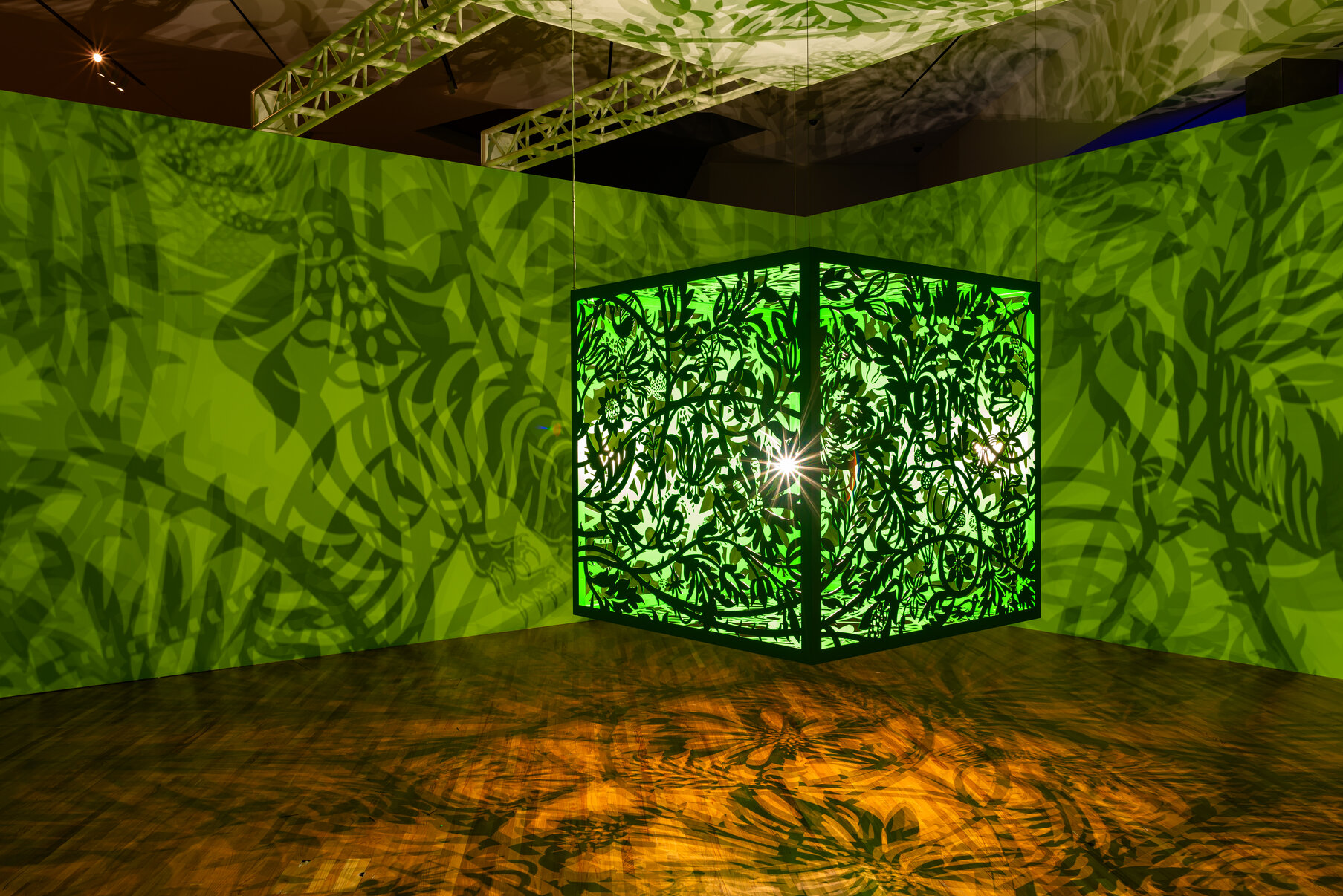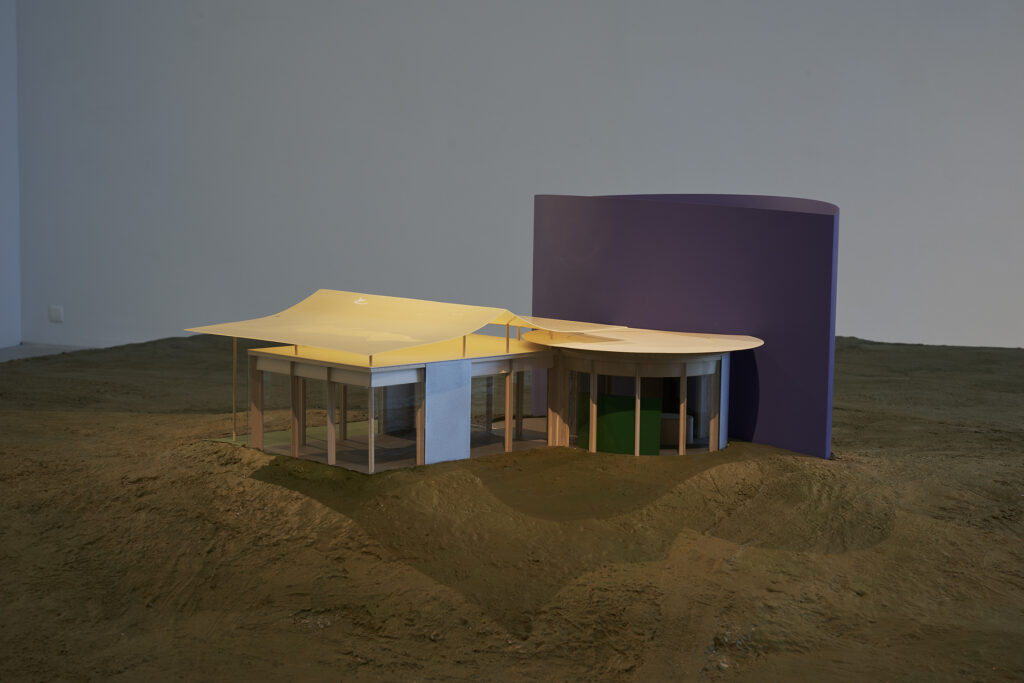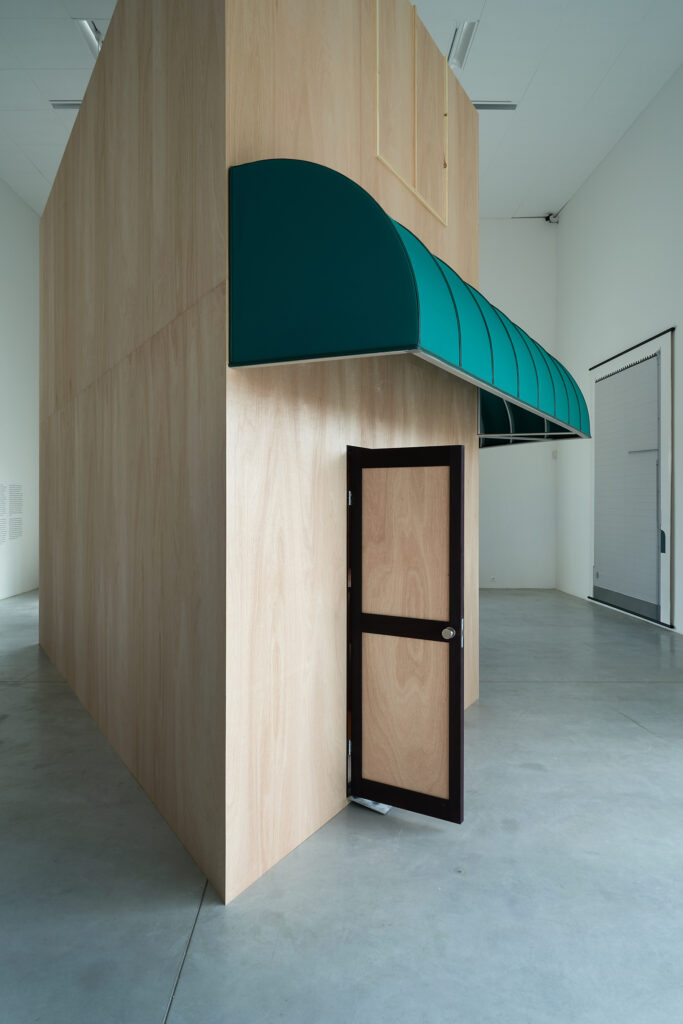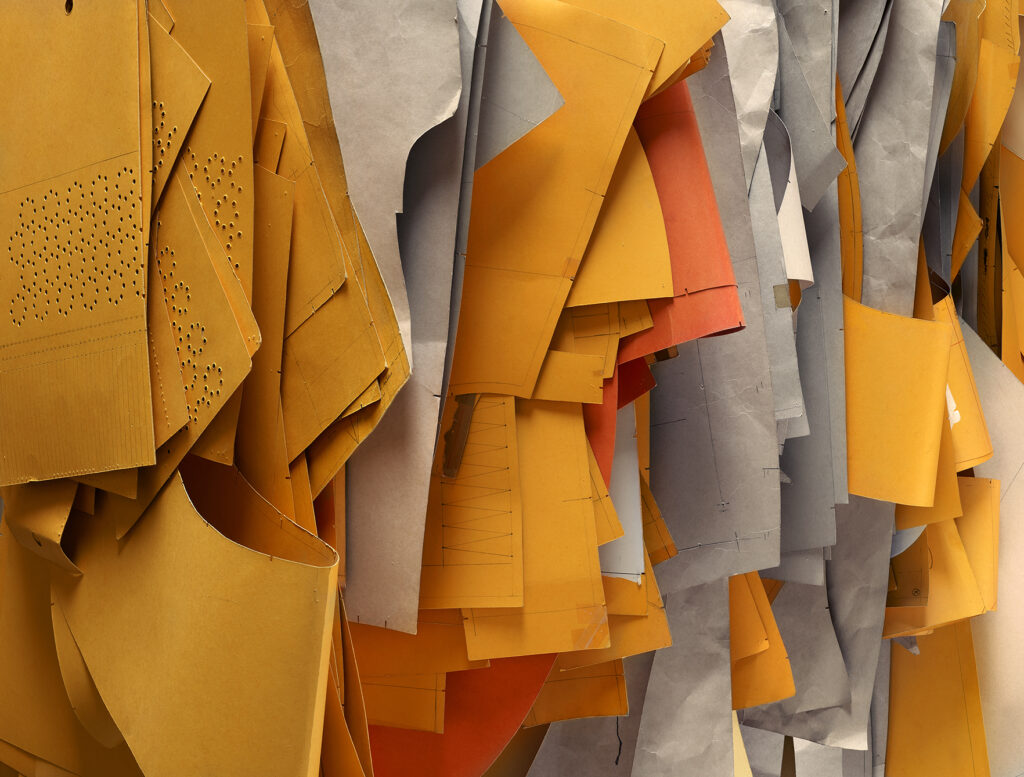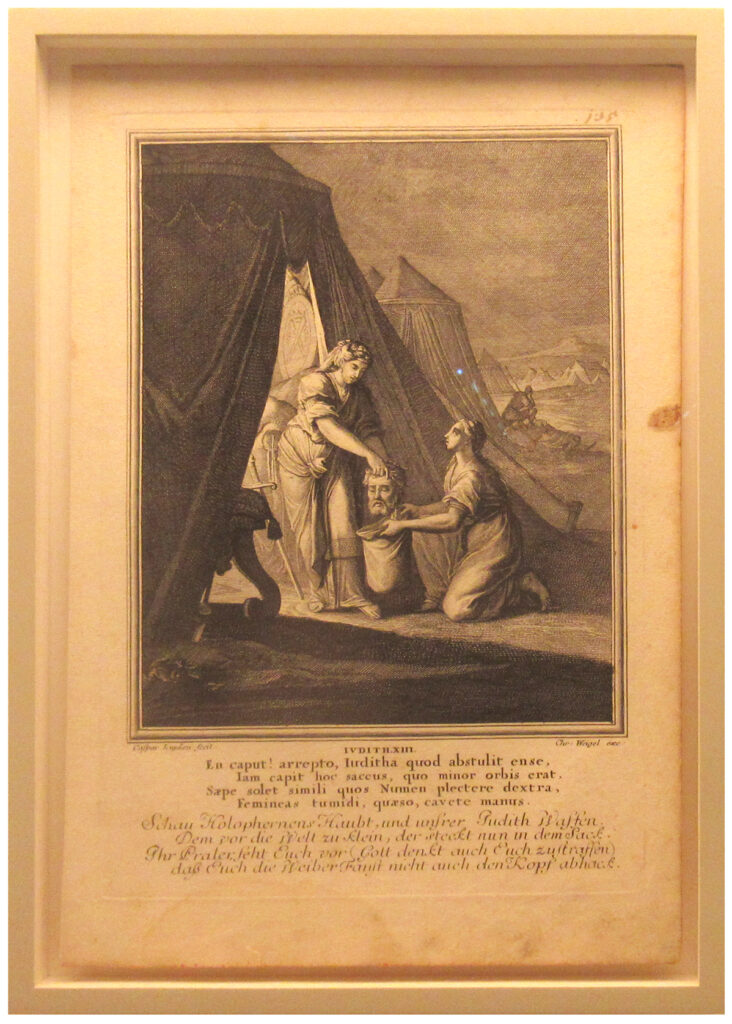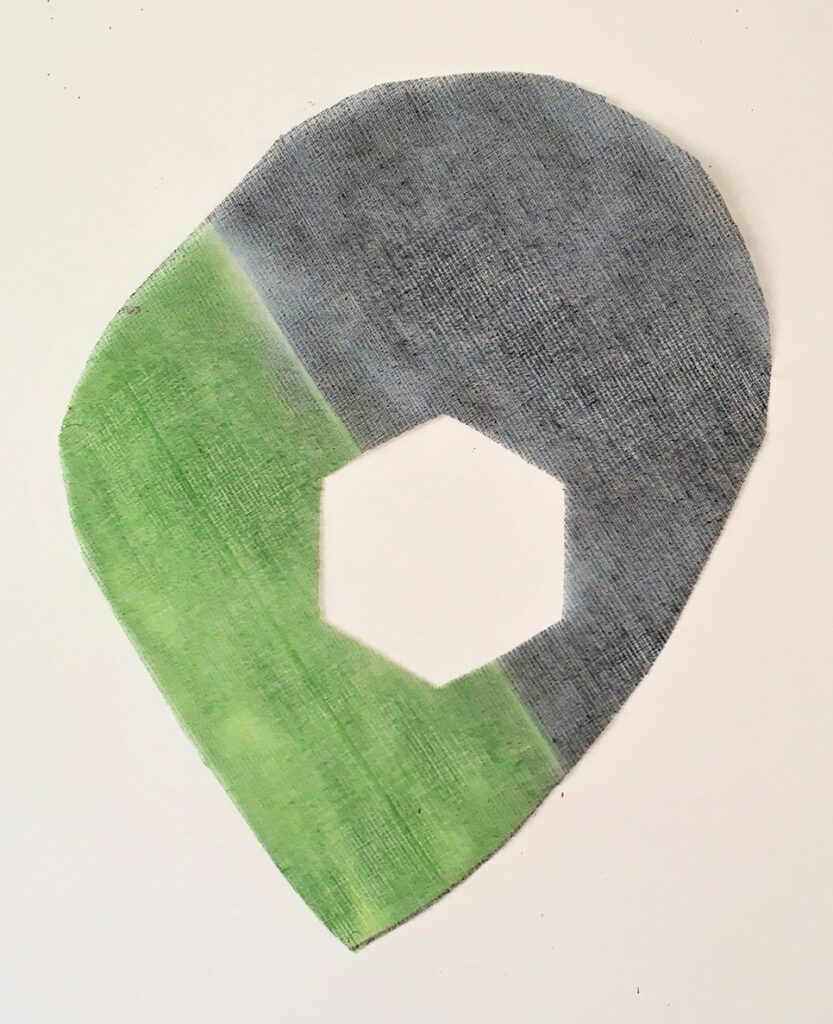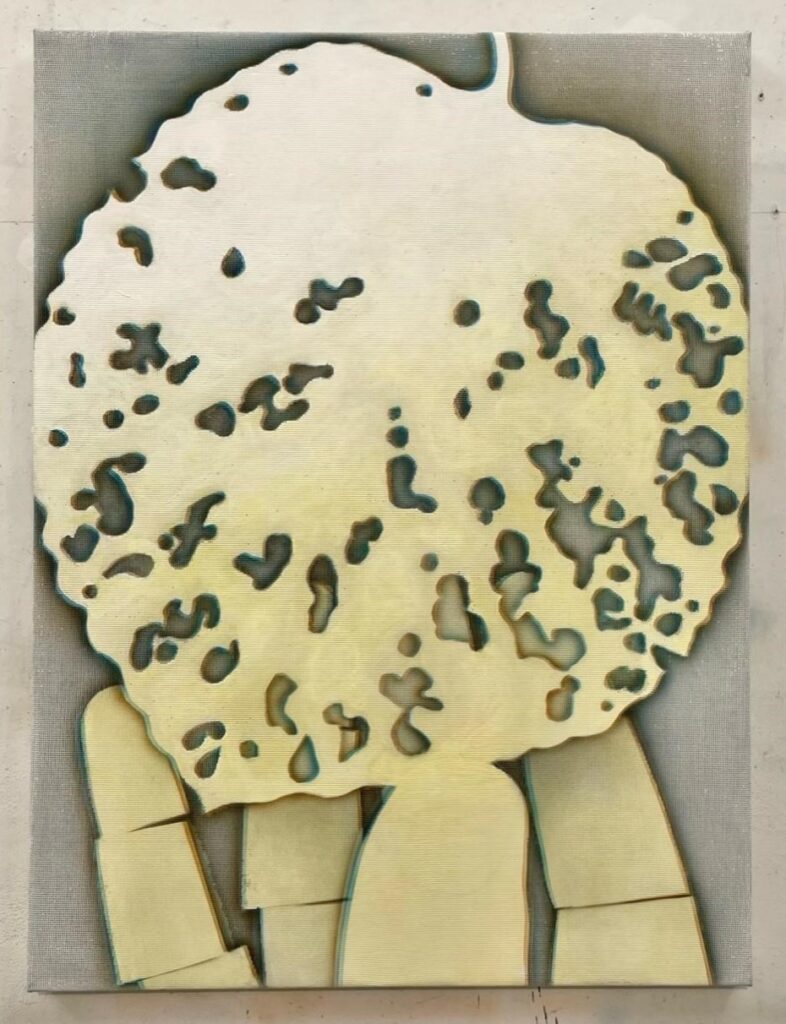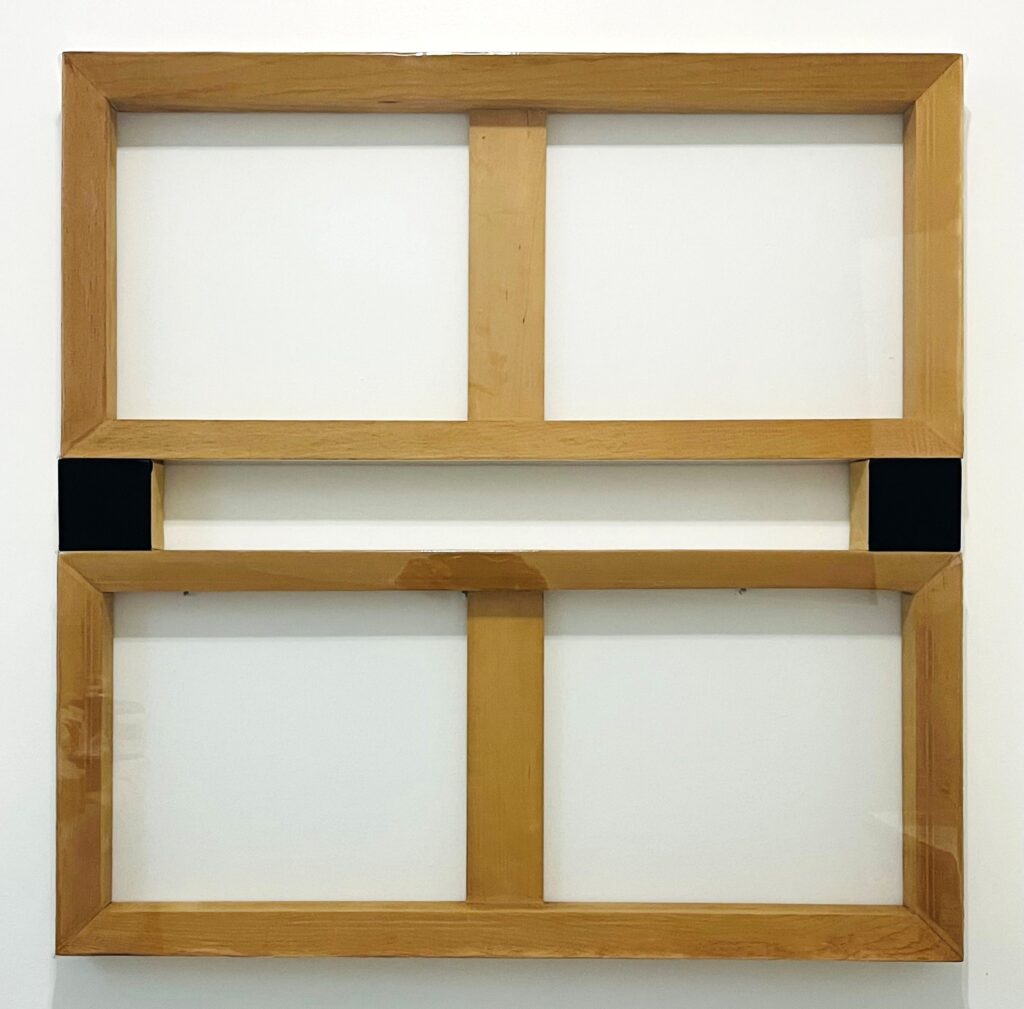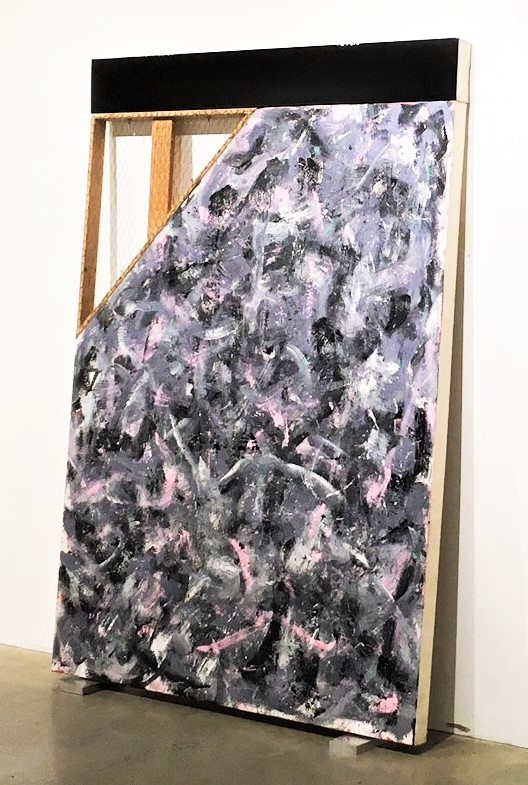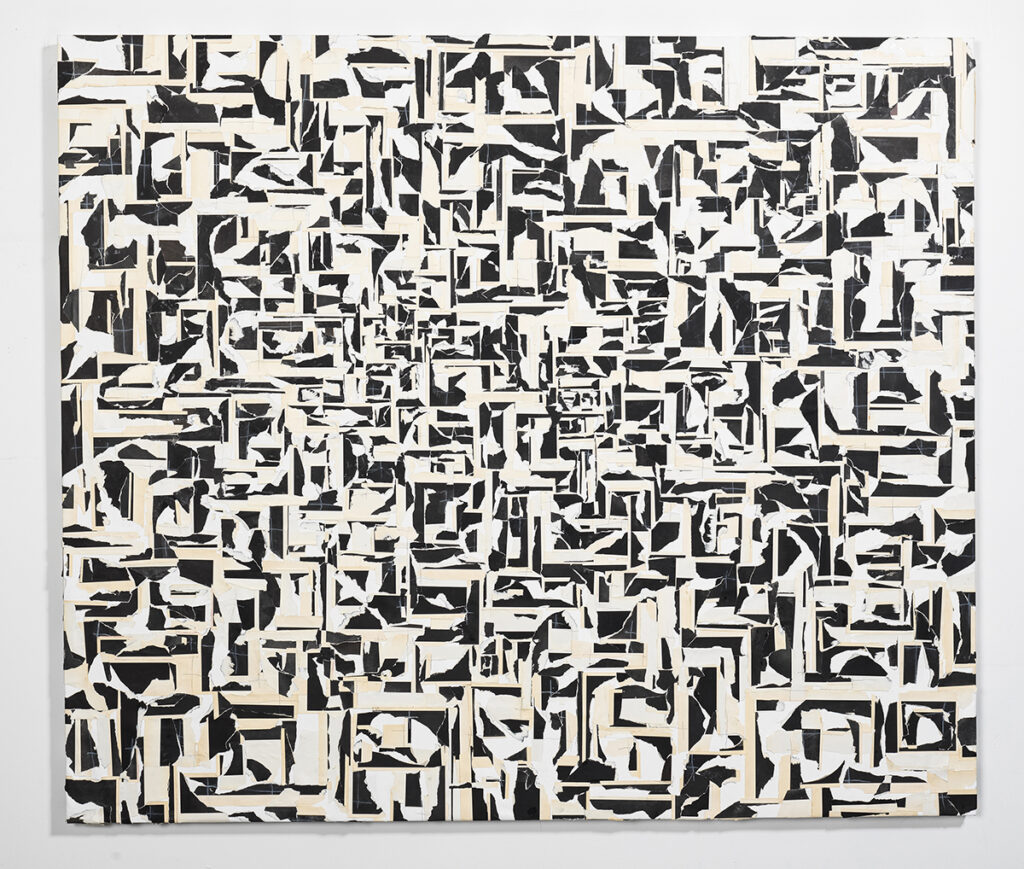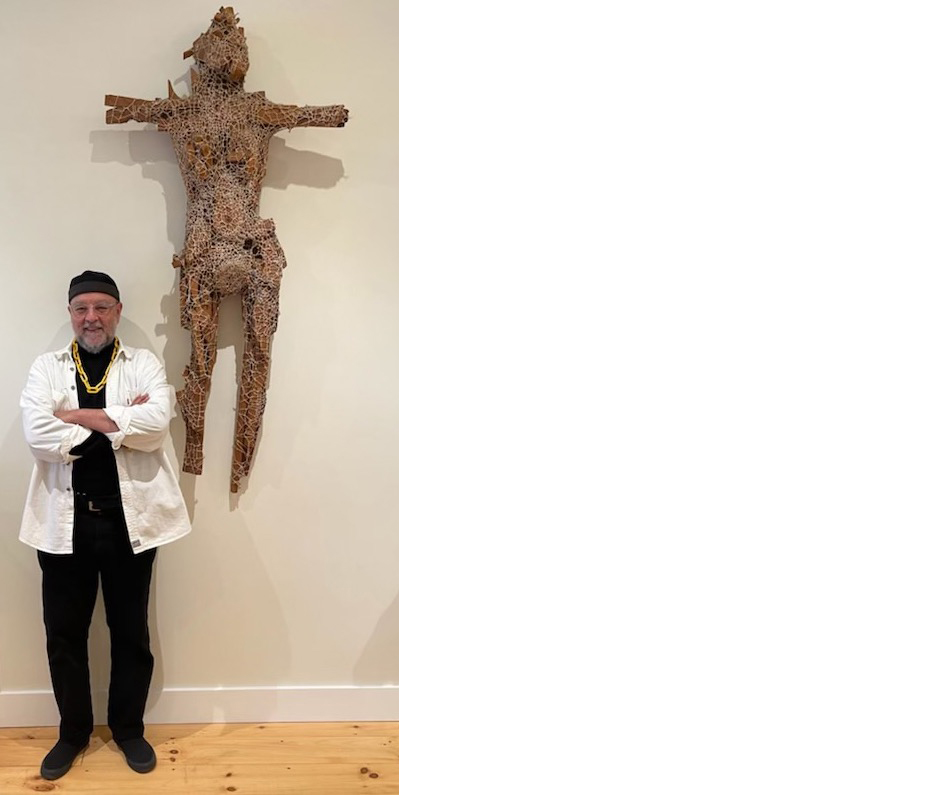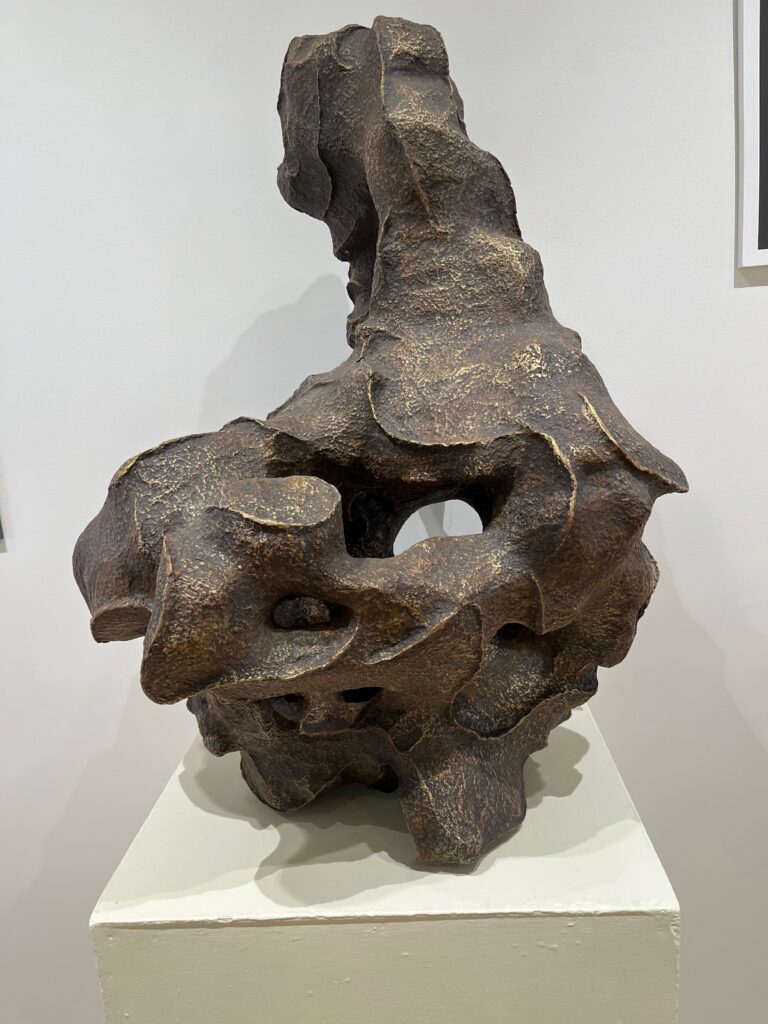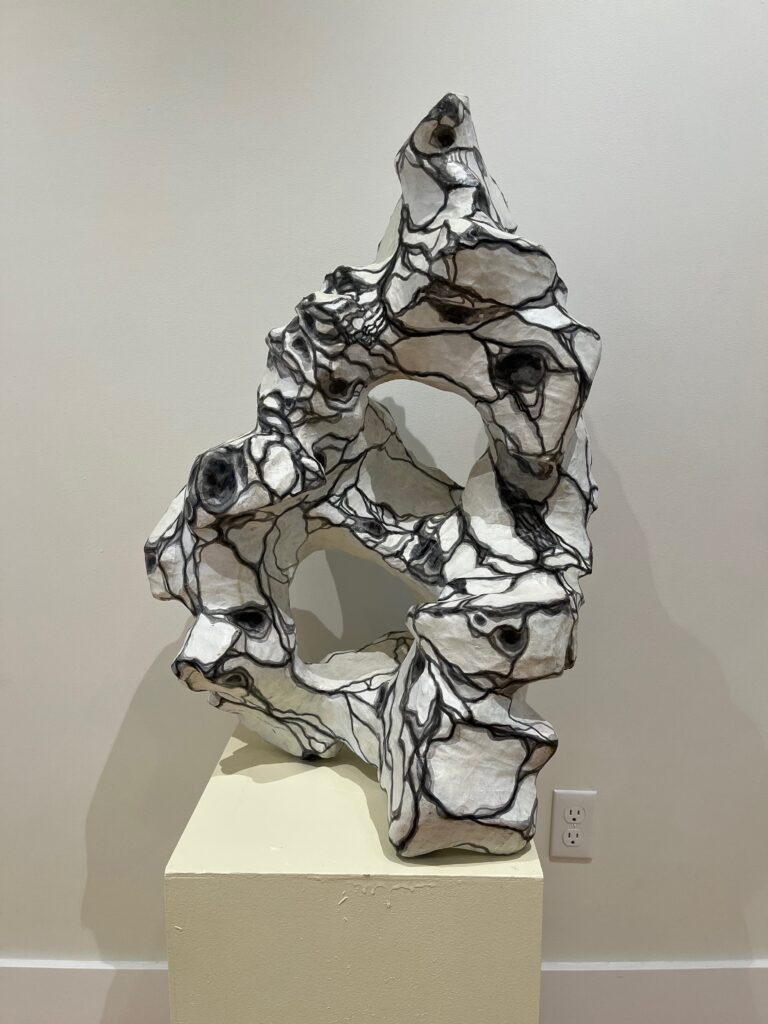by Jonathan Goodman
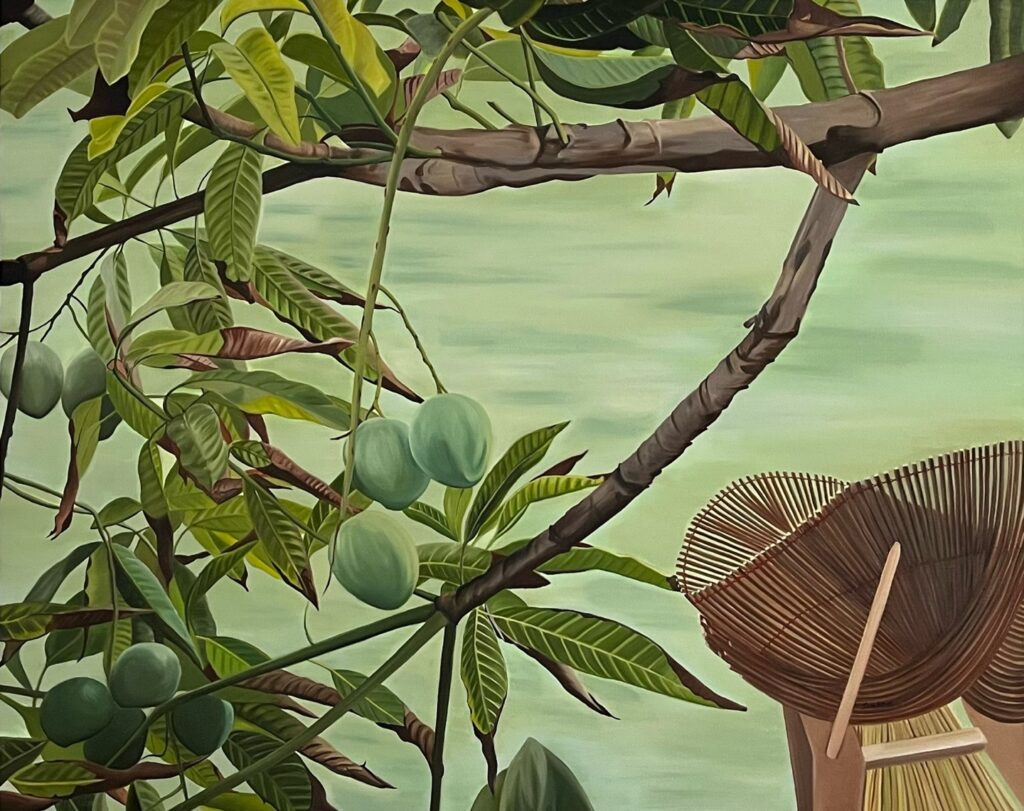
Sunhee Kim Jung’s show of paintings explodes with color and vitality. The exhibition, presented at Paris Koh Fine Arts, located just beyond the George Washington Bridge in New Jersey, consists of a group of floral works of art, notable for their density of effect, their intensity of hue, and their open optimism, the result of an outlook devoted to beauty. Although she is from Korea, Kim Jung studied in the Washington, D.C., area; she received her BFA from the Corcoran School of Art, and then went to American University to take her MFA. Since then the artist has moved to Maryland. Although her show takes place very near to a major bridge spanning the Hudson, her work does not reflect the asphalt streets, tall apartment buildings, and steel bridges that turn New York into a site of industrial density. Instead, Kim Jing relies on an accurate but also romantic natural vocabulary: trees, flowers, dense arrangements of foliage. It looks very much like Kim Jung is painting from real life, not from her imagination. Yet the imagery possesses a vividness that results from the way she envisions, on her own terms, the particulars of her subject matter.
One of the strongest attributes of the artist’s floral projects is her attention to detail. Kim Jung’s gaze is highly focused, although not to the point of scholarly obsession, providing her with artistic freedom. Her studies present a strong interest in natural form—the work is usually strengthened by a precise understanding of the flowers’ shapes and hue. This precision results in a language of highly specific elements. There is a larger question, a critique, that can be noted: Is Kim Jung’s orientation anachronistic? This kind of work has been part of both Western and Asian art history for a long time, Painting flowers in detail has long been the basis of still life, an established way of working for hundreds of years. Its historical hold on contemporary art has been freed by the idea that today anything is possible, even if the concept or the form has not yet been developed or is already known. One remembers the flowers painted by the modernist Mondrian, which stand out as examples of the tradition. They have an excitement and energy that makes them new, despite the well-established nature of the motif. Kim Jung follows this path. She finds excitement in a realist, but also independent, reading of nature. Her interest in floral forms, modified to a degree by her own imagination, results in an enthusiastic treatment of the garden and the expanse of the woods..
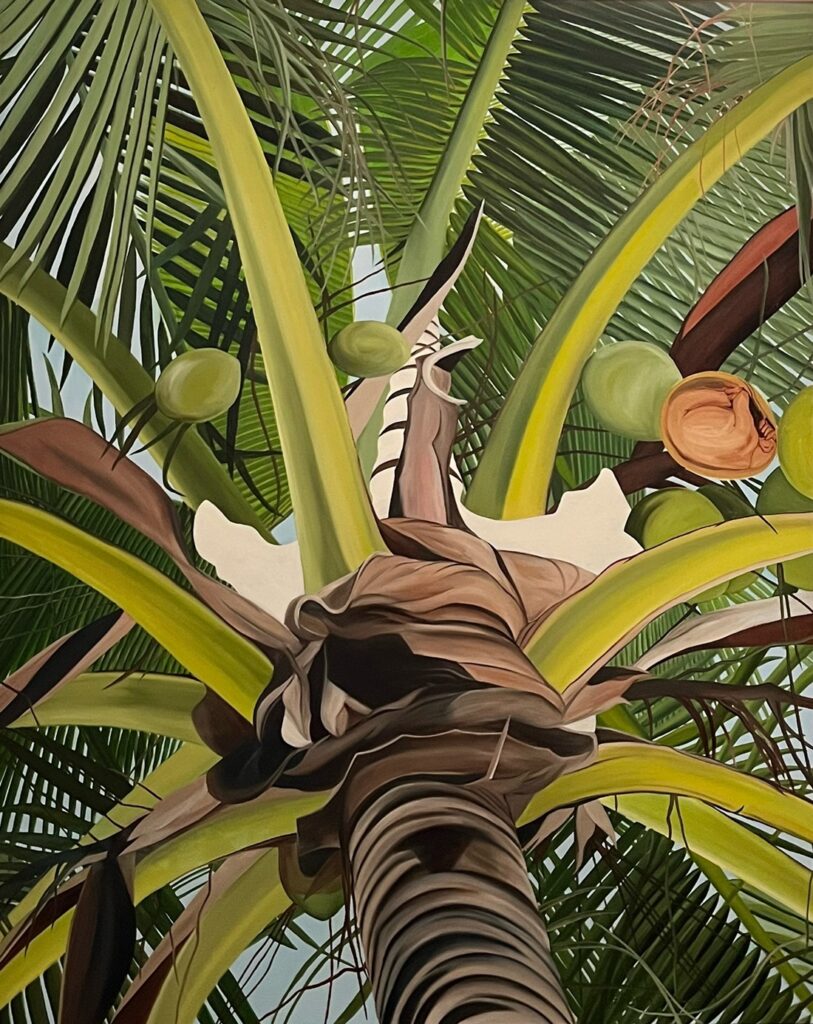
The individual images tell their story—without a romantic reading. They become expressions of energetic beauty kept from visual overreaching or excessive sentiment by Kim Jung’s close detail. One can study the paintings the way a botanist would, with an eye for factual visuals whose elements seamlessly create the entirety of a flower. In A Bearing Life (2005), the entire composition is devoted to an upward gaze that rises to meet the top of a palm tree. There a canopy of fronds takes up a good part of the picture. The brown trunk rises to the rounded central core of the tree, from which the branches supporting the fronts extend outward, away from its center. Coconuts, green and brown, occur in the painting’s upper register. As an entirety, A Bearing Life is impressive. It is true to life, but the way the image is presented makes it necessary that we look upward, as if we were standing underneath the tree. The originality comes from the upward point of view Here Kim Jung’s work is made more interesting by her idiosyncratic manner of painting, which transforms our knowledge of plants into something original.
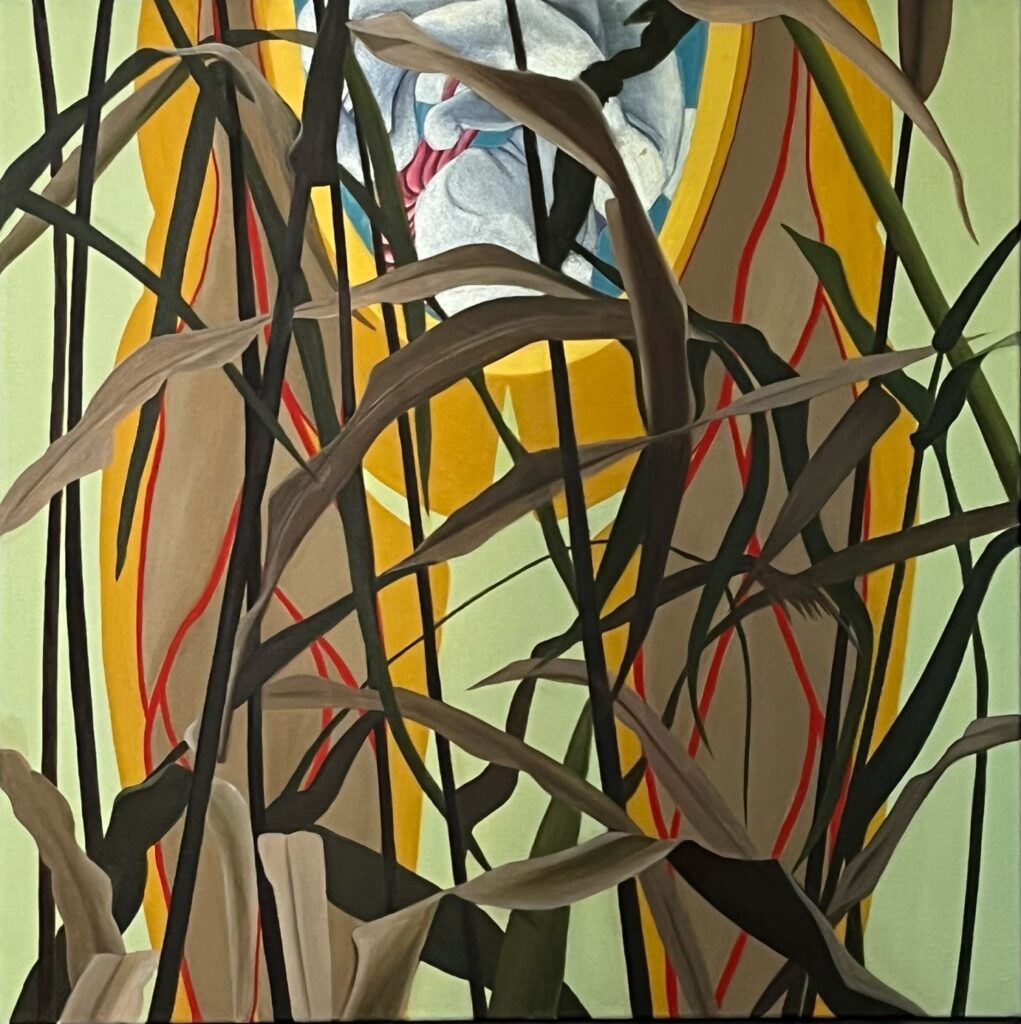
Silver Surfer Baby (2007) is a complicated painting. It presents a frontal tangle of brown leaves, which look like they are in the late stages of decline. They make it difficult to see an important part of the painting: the silver image of a baby, rotated so that its head is facing downward, as if ready for birth. This ambiguous image is surrounded by a yellow-gold oval frame. The painting’s background is a light green, which contrasts with the brown of the leaves. We can read this work as an emblematic rendering of the beginning of life, in the form of the fetal baby, and the final stages of life, indicated by the lifeless leaves. Most of the time Kim Jung is given to description, but flowers and blooms can easily take on symbolic meaning if the artist intends them to be seen in that way. In this painting, with its infant, Kim Jung has developed an approach that complicates the floral imagery she is so good at rendering. The baby is capable of representing a meaningfulness greater than itself, an embodiment of possibility, and as a symbol of the start of life, it is a highly optimistic image. The brown leaves might well be seen as the loss of nature. Together the two images extend across the duration of life.
Such a combination of objects underscores the complexity of Kim Jung’s production. As an Asian artist who has lived in America for many years, Kim Jung is an artist who cannot but help bring differing outlooks and visual styles together. Of course, floral painting has been central to Eastern art for centuries, although the high point of such work occurred a long time ago. Still, the impulse to paint a strikingly attractive flower, and to describe it within the context of deliberate beauty, is strong. But Kim Jung has foregone the use of brush and ink in favor of Western materials, which she uses in a way that emphasizes detail as much as expressive lyricism.
But that does not mean the details are unable to express their own sense of beauty. How can one not paint a flower without paying attention to its innate elegance? The point is that Western and Asian culture have done this in different ways, while an artist like Kim Jung, having lived in two very different worlds, has been able to combine the two ways of seeing. We are living in a time of extreme eclecticism, which could explain the formal aspects of this art. But eclecticism doesn’t truly apply to the artist’s work. Instead, the combination suggests a mixed understanding of traditions that enforces our sense that the art has been merged by Kim Jung’s creativity.
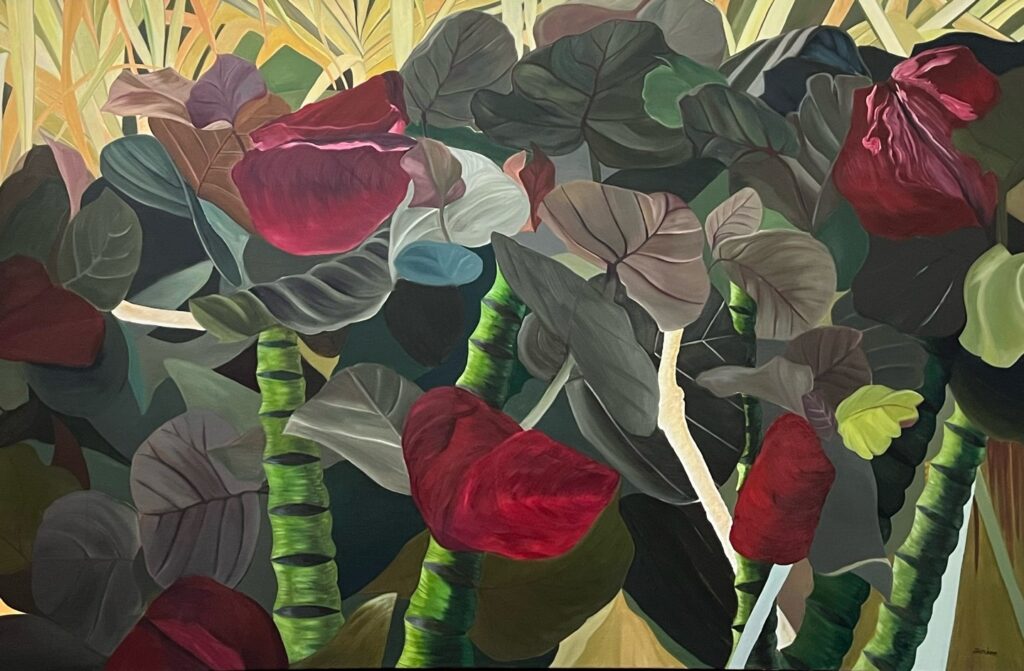
The work Red Leaves (2005) is a densely painted presentation of red leaves and gray, veined ones; their numbers make the composition condensed enough that the ridged green stalks the artist includes are slightly hidden. Above the welter of leaves, at the very top, one can see a slight horizontal sliver noticeable for its brightness, consisting primarily of stalks. The deep red of the leaves, spread across the expanse of the canvas, develops a striking contrast with the gray leaves and the green stalks. Red Leaves is a work dedicated to artistic and natural profusion, leaving us fully taken with the imagery, which seems, because of the freedom of the plants’ placement, to occur more in the exterior world than in the controlled circumstances of a private garden. This reading may, or may not, be correct; perhaps the ultimate purpose of the painting is the display of the deep red, cupped forms that quietly take over the rest of the imagery. Their intensity of color makes them highly noticeable in comparison with the quieter hues surrounding them. Visual art often works with contrasts—noticeable differences leading to original juxtapositions of forms and colors. In Red Leaves, the red color operates as a means to intensities of feeling, which is a good way of describing Kim Jung’s work generally. She uses the forms and colors of the flowers as a stand-in for emotional involvement. This way of working is especially successful by virtue of its indirect assertion.
So Kim Jung is a highly talented artist proceeding within a highly developed tradition. Her work cannot be called Asian, yet the very act of painting flowers lies deep within the history of her original culture. The boldness of her paintings may originate with her education and long stay in America. The work is devoted to detail as much as it concerns the general energies of the flowers. Yet her efforts are far from scientific study. Instead, it projects a visionary energy. The vitality behind her work is expressed by visual decisions that emphasize particulars, vivid hues, and forms that stay close to the actual shape of the flower. But while she is an artist determined to present nature in actuality, Kim Jung is also an artist of considerable passion; her emotions find their expression in her art, which acts as a bridge between her internal life and the rest of the world—the people who look at her paintings. Her feelings are presented by forms that remain with her audience because they are so sharply rendered. It is clear that, over time, these works will retain their vehemence and attraction. Being both accurate treatments of nature and clear statements of emotion, the paintings become memorable portraits of what the artist sees and feels.
Sunhee Kim Jung Solo Exhibition (September 6 – 29, 2022), Paris Koh Fine Arts, 201 Bridge Plaza North, Suite 1, Fort Lee, NJ 07024
